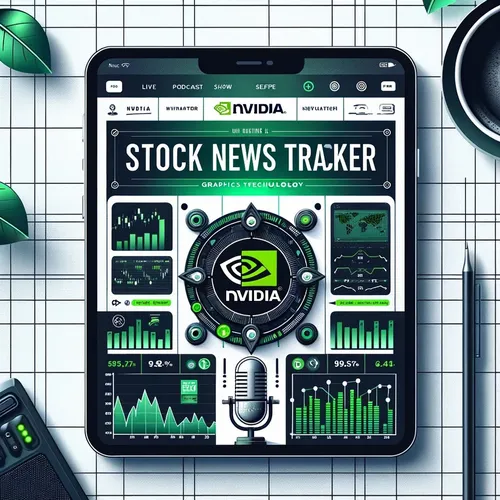Nvidia's Future Shine: Analyzing the Tech Giant's Potential Buying Opportunity
- Author
- Quiet. Please
- Published
- Sun 11 Aug 2024
- Episode Link
- https://www.spreaker.com/episode/nvidia-s-future-shine-analyzing-the-tech-giant-s-potential-buying-opportunity--60987501
Nvidia Corporation, renowned for its high-performance graphics processing units (GPUs), is a pivotal player in the high-tech industry. The company's stock is currently trading at $104.75 per share, and with its quarterly results imminent, investors are debating whether this is an opportune moment to invest.
Nvidia's financial health and market performance are critical aspects to consider. The company has shown consistent revenue growth, driven by its dominance in the GPU market and expansion into data center solutions, artificial intelligence, and autonomous vehicles. Nvidia's products are integral in sectors like gaming, professional visualization, data centers, and automotive, allowing it to diversify its revenue streams and reduce dependency on a single market segment.
Despite the recent decline in stock price, there are compelling reasons that might suggest a potential buying opportunity. Historically, Nvidia has demonstrated resilience and adaptability in matching industry trends. The increasing adoption of AI and machine learning technologies across multiple sectors positions Nvidia favorably for future growth. The demand for advanced GPUs is expected to rise, as they form the backbone of these emerging technologies.
Analyst sentiment and market forecasts also play a significant role in investment decisions. Analysts often highlight Nvidia's robust technological portfolio and its leadership in the semiconductor industry. Many predict that the company will continue to benefit from the ongoing digital transformation and the growth in cloud computing. Moreover, Nvidia's strategic acquisitions, such as Mellanox Technologies, have expanded its capabilities and market reach, enhancing long-term growth potential.
However, it is crucial to acknowledge the risks involved. The semiconductor industry is highly competitive, with companies like AMD and Intel continually pushing the boundaries of technology. Market conditions, such as chip shortages, can impact supply chains and production costs. Moreover, Nvidia's valuation metrics suggest it trades at a premium, meaning that the stock price might already reflect much of the anticipated growth.
The upcoming quarterly results will be an important indicator of Nvidia's financial trajectory. Investors should closely monitor key metrics such as revenue, earnings per share (EPS), and profit margins. Positive results could signal continued growth and potentially drive the stock price higher, while any disappointments might lead to further declines.
It's also worth noting the broader market conditions and investor sentiment. The stock market is influenced by macroeconomic factors, including interest rates, inflation, and geopolitical events. These external factors can affect Nvidia's stock performance irrespective of its fundamental strengths.
In conclusion, while Nvidia's current stock price of $104.75 might present a buying opportunity, it comes with inherent risks and
